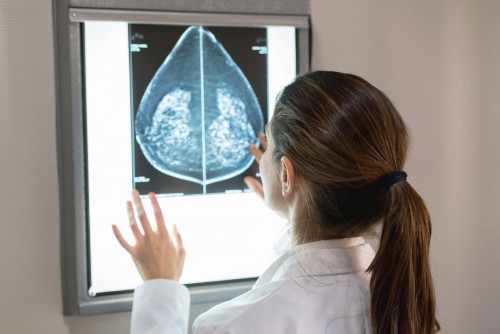AI May Shape the Future of Predicting Breast Cancer Risk

Australian researchers have highlighted the potential for the use of artificial intelligence (AI) in identifying women with increased breast cancer risk. The article, published in Trends in Cancer, explores how AI can help clinicians to better identify features on a mammogram that indicate a high risk of developing breast cancer.
The University of Adelaide’s Associate Professor Wendy Ingman, part of the Robinson Research Institute and based at The Queen Elizabeth Hospital, was lead author on the publication, which also featured experts from QUT, University of Melbourne, Peter MacCallum Cancer Centre and University of Western Australia.
“Artificial intelligence is enabling us to delve deeply into the information inherent in a mammogram and identify novel features associated with higher risk of a future breast cancer diagnosis,” said Associate Professor Ingman.
The patterns of white and dark on a mammogram have long been studied as mammographic breast density, which is a known risk factor for breast cancer.
It’s within these patterns of mammographic density that AI is now finding new mammographic features that can be used to identify those women most at risk of a future breast cancer diagnosis.
“AI methods are now uncovering mammographic features that are stronger predictors of breast cancer risk than any other known risk factor,” said Associate Professor Ingman.
Professor Rik Thompson, Professor of Breast Cancer Research and Domain Leader, Centre for Genomics and Personalised Health and School of Biomedical Sciences, QUT, was senior author of the article.
“There are a growing number of studies from Australia and internationally suggesting that AI-generated mammographic features are indicative of early malignancy, undetectable by radiologists, but may also represent benign conditions like atypical ductal hyperplasia, which is associated with an increased risk of breast cancer,” said Professor Rik Thompson.
“Certain mammographic features could be areas of high oncogenic activity that increases the chance of cancer developing.”
“Critically, we need to identify the pathobiology associated with mammographic features and the underlying mechanisms that link them with breast cancer oncogenesis. It is this common goal that brings us together.”
Associate Professor Helen Frazer, a breast radiologist leading research studies that investigate use of AI-generated risk-scores within the BreastScreen Victoria program, said research in this space could create new opportunities to improve breast cancer screening, tailored to suit individual needs.
“Use of AI could help us identify those women at increased risk of developing breast cancer in the future and be a step forward in personalizing screening to best suit the individual and improve outcomes,” said Associate Professor Frazer.
Gerda Evans, breast cancer survivor and Co-Chair of the Australian Breast Density Consumer Advisory Council, has been working side-by-side with researchers exploring how AI can help refine mammography-based risk prediction.
“This is a great advance in predicting breast cancer risk, with potentially huge benefits for the community,” said Evans.
Associate Professor Ingman said mammographic density is still a valuable measure of risk at the time of a mammogram.
“AI is enabling us to refine mammographic density as a risk factor, and hone in on particular features in a mammogram that are stronger risk predictors, however high mammographic density remains a significant breast cancer risk factor,” said Associate Professor Ingman.
“More information about mammographic breast density can be found on the InforMD website that our research team developed to help de-mystify this breast cancer risk factor.”
